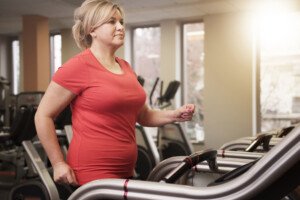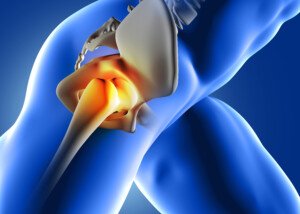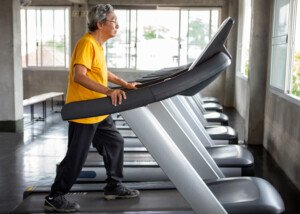
If you’re recovering great from your double hip replacement and walking well without assistance, here are smart treadmill guidelines from a surgeon, even if you’ve never before used a treadmill.
As a fitness expert (former personal trainer for a large gym), I’m always aware of how people use treadmills.
The objective of treadmill use should be to mimic “real” walking as much as possible. One way to achieve this is to replicate the posture and spinal movement of “real” walking.
“I had a double hip replacement.”
Recently I saw a man step onto a self-powered treadmill, the kind with the curved tread belt that moves when you begin walking on it. There is no motor.
I was on the same type of machine next to him and saw that he had his hands on the bars out in front, causing his tall body to lurch forward (excessive trunk flexion), making him half a foot shorter than his actual height.
This defies natural walking gait. The upper body is locked up when one holds onto the treadmill.
This causes unnatural hip motion – and that’s never a good thing.
Several times he let go and attempted to walk hands-free – a very slow and wobbly walk – but quickly returned to holding on.
He was really leaning forward at the hips while “walking.” He made eye contact with me. I pointed out how bad this was for his posture.
That’s when he told me he’d had a double hip replacement just five weeks prior, due to bone-on-bone disease rather than a fracture.
I said that a double hip replacement is all the more reason for implementing a natural walking gait.
The hips are intimately connected to the spine, especially the lumbar (lower) portion. Holding onto a treadmill thwarts this connection.
I told him that holding on will only train himself to use a walker (which he at one point had been on following his double hip replacement).
He was suddenly inspired by my information and removed his hands, walking at a pace that was a little faster than his previous half-baked attempts.
And guess what, people: He was steady and erect, body at full height, arms swinging naturally.
NOW he was replicating natural walking, correct posture, correct movement, the whole kit and caboodle!
He didn’t lose his balance or become unsteady at any point during the eight minutes he was walking hands-free AND chatting with me.
His confidence grew because someone had planted a seed in him.
The need to hold onto a treadmill, I’ve found over the years, is rooted in lack of knowledge and lack of confidence.
This man was now walking as though he’d never had any problems with his hips; you would have never known it watching him confidently walk like a soldier on that curved belt.
Treadmill Walking Guidelines for Double Hip Replacement Patients

Shutterstock/gpointstudio
Certainly, double (and single) hip replacement patients receive permanent (as well as timeline post-surgery based) restrictions from their surgeons that may be individualized. But the general guidelines for forever restrictions are:
• Running, jogging, racquetball, tennis, basketball, skiing and other high impact activities
• The line between “high impact” and medium impact can be blurry and is open to subjective interpretation.
• Certainly, logic says that jumping up and down on an exercise stool or typical pickup games of volleyball is high impact, and golf is low impact, but what about a step aerobics class using only the riser with no elevation?
• This is why it’s important to go over your desired activities with your surgeon.
Dr. Joseph Ciotola, a hip replacement surgeon with Mercy Medical Center in Baltimore, MD, agrees that by the time the double (or single) hip replacement patient can walk without assistance and is pain-free, they can feel confident about walking on a treadmill without holding onto the rails or front bar. (But start out at a slow speed.)
This assumes that the patient does not also have spinal stenosis (some patients with bone-on-bone hip disease also happen to have spinal stenosis, for which its pain is relieved by bending over when walking).
Dr. Ciotola affirms that walking without holding onto a treadmill helps encourage the new hip replacement devices (and surrounding soft tissue) to move and work in an efficient way, and that holding onto the machine veers away from natural biomechanics.
 Dr. Ciotola is dedicated to providing his patients the best orthopedic care possible for their hip, knee or shoulder pain.
Dr. Ciotola is dedicated to providing his patients the best orthopedic care possible for their hip, knee or shoulder pain.
 Lorra Garrick has been covering medical, fitness and cybersecurity topics for many years, having written thousands of articles for print magazines and websites, including as a ghostwriter. She’s also a former ACE-certified personal trainer.
Lorra Garrick has been covering medical, fitness and cybersecurity topics for many years, having written thousands of articles for print magazines and websites, including as a ghostwriter. She’s also a former ACE-certified personal trainer.
.


























